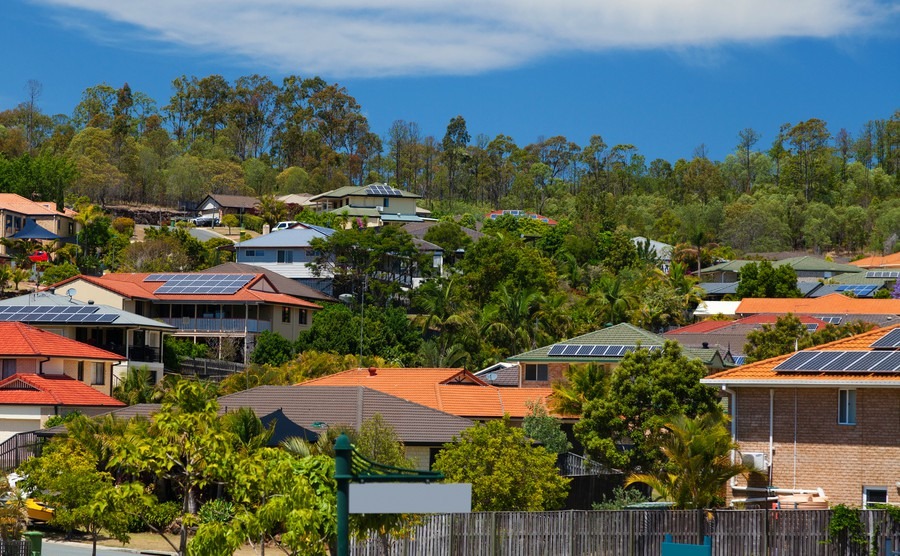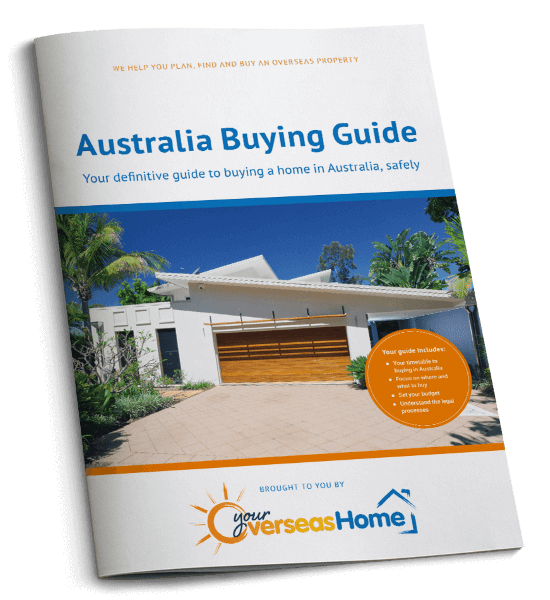With some of the most expensive electricity in the world, here is what you need to know about choosing an energy efficient home in Australia. Plus it’s pretty good for the environment too.
Many people are turning towards energy efficient homes in Australia, and for good reasons. Australia has some of the most expensive electricity in the world at 17p a kilowatt hour (the average electricity price in the UK is 12p per kWh). With most parts of the country experiencing ideal sun exposure, Australia has the highest rate of residential solar panel installation in the world, as a measure to battle climate change and keep the power bills to a minimum. If you are thinking of purchasing property in Australia, doing your homework beforehand and choosing an energy efficient house will save money down the road.
Energy conservation in a home can be achieved by good design, the use of energy efficient technologies, and the practice of energy conservation behaviours.
Energy conservation in a home can be achieved by good design, the use of energy efficient technologies, and the practice of energy conservation behaviours. According to a recent study 76 percent of Australian home owners were worried about escalating energy costs in their homes. The Department of the Environment states that one-fifth of Australia’s greenhouse gas emissions come from households, with the average home emitting over 7 tonnes of greenhouse gases a year. With the majority of Australian power coming from dirty fossil fuels such as coal, and an average annual household electricity bill of £1,016, there is plenty of incentive to keep power costs down by seeking energy efficient alternatives in the household. There are seven key ways to make a home energy efficient:
Heating and cooling
Heating and cooling are the largest energy drains in an Australian household, accounting for 40 percent of power usage. When choosing an energy efficient home look for energy efficient design allowing for natural air flow, orientation to make the best use of natural lights and wind and space heating/cooling in rooms that require it.

You won’t be in short supply of sun to power your home in Australia
Hot water
Hot water in the home is the largest contributor to greenhouse gas emissions and accounts for 21 percent of power usage. It’s crazy to pay in a hot country like Australia! Avoid electric hot water systems which guzzle power and opt for solar or gas instantaneous or storage systems. Adopting water conservation behaviours will also assist in keeping electricity bills down.
Hot water in the home is the largest contributor to greenhouse gases and accounts for 21 percent of power usage. It’s crazy to pay in a hot country like Australia!
Lighting
Choosing a home that uses natural daylight is the first step to saving money on electric lighting. Installing LED lights will save money and is better for the environment. Lighting accounts for 8-15 percent of the average household electricity bill; this can easily be reduced by good lighting design, energy efficient lighting technology and simply remembering to turn off the lights when not needed.
Appliances
Appliances account for about one third of household energy consumption. When choosing appliances for the home look for the Energy Star rating label and Water Efficiency Label – the higher number of stars/water drops the more efficient the appliance is. If buying a home with a pool, making sure the pool pump is energy efficient and properly maintained to save you money.
Home entertainment/office
When selecting home entertainment/office devices look for the Energy Star rating. Turning off appliances or putting them in standby will save power when not in use. In Australia power outlets can be turned off at the wall, this saves up to 10 percent of the power cost alone.
Home automation
Home automation is becoming a popular way to save on electricity costs and reduce a home’s environmental footprint. These ‘Smart Homes’ have remote and programmed automation that controls and manages the energy consumption and output of a home to save money.
Renewable energy
Renewable energy in the form of solar and wind are being used in the household to produce electricity, create hot water and provide back-up power supplies as an alternative to grid power. Although the initial investment can be significant, the Australian government often has programmes to subsidise some of the initial cost, and in the long run renewable energy systems can create power neutral or positive homes, eliminating power bills and in some cases creating a power credit. Around 15 percent of Australian households use solar power and this number is increasing exponentially each year.
When choosing your home in Australia look for the newly introduced Energy Scores, which provide an instant snapshot of a home’s energy performance by delivering an energy score on a scale of 1 to 100. It is also possible to conduct an energy audit of a home before purchase. These home sustainability assessments help home owners better understand a household’s energy use, make suggestions for improvement and make recommendations for changes that will have the biggest impact on energy consumption. Smart meters can also be installed in a home, these provide enhanced capabilities to assess and transmit energy use data, fault monitoring, and communication between utility and home appliances. These meters can be monitored from within the home giving home owners a real-time energy use and cost snapshot.
The Australian Buying Guide is here to help Britons plan and research a move to Australia. We offer expert advice to help with the purchase of an Australian home. If you have any questions about buying property in Australia, make sure you reach out to us today.
(Exchange Rate as of 30 January 2017, 1GBP= 1.66AUD, Smart Currency Exchange)

The Australia Buying Guide takes you through each stage of the property buying process, with practical recommendations from our experts who have been through the process themselves. The guide will help you to:






